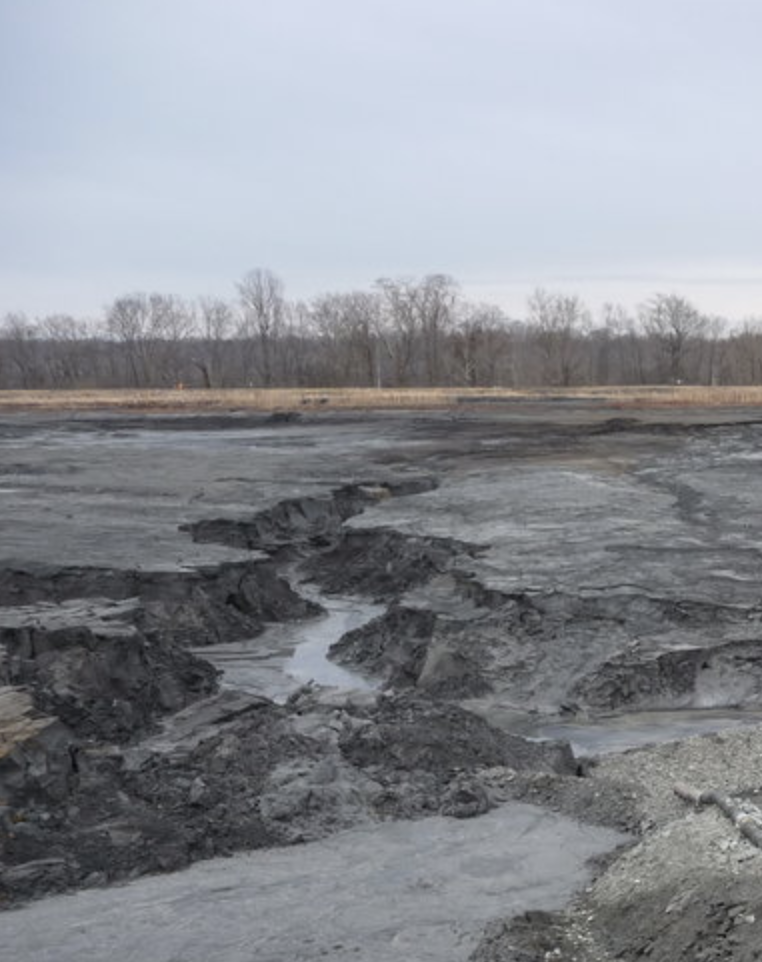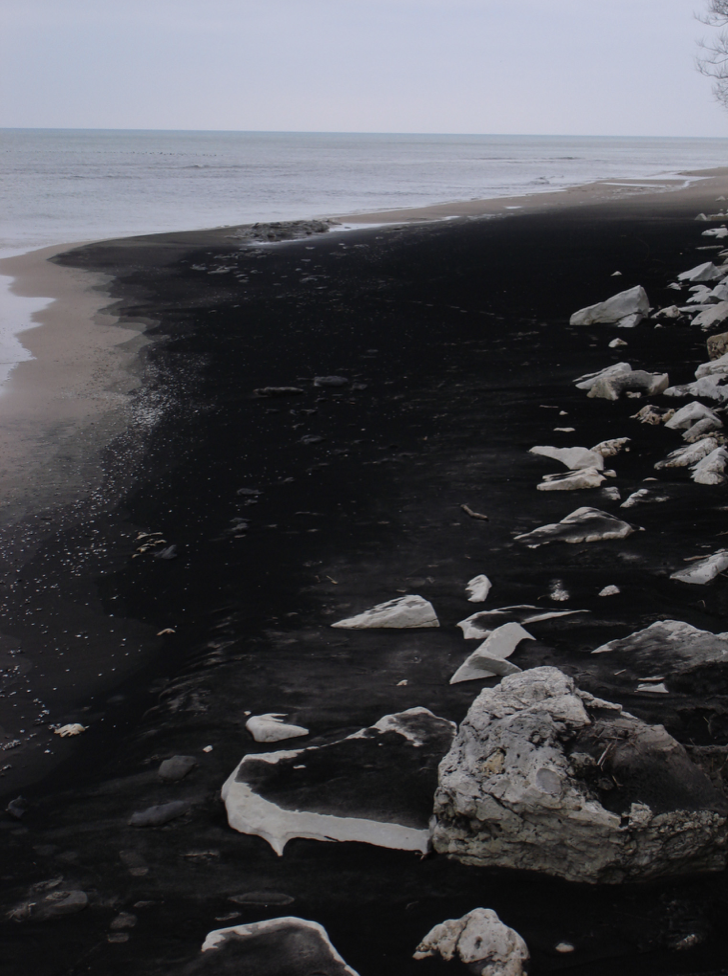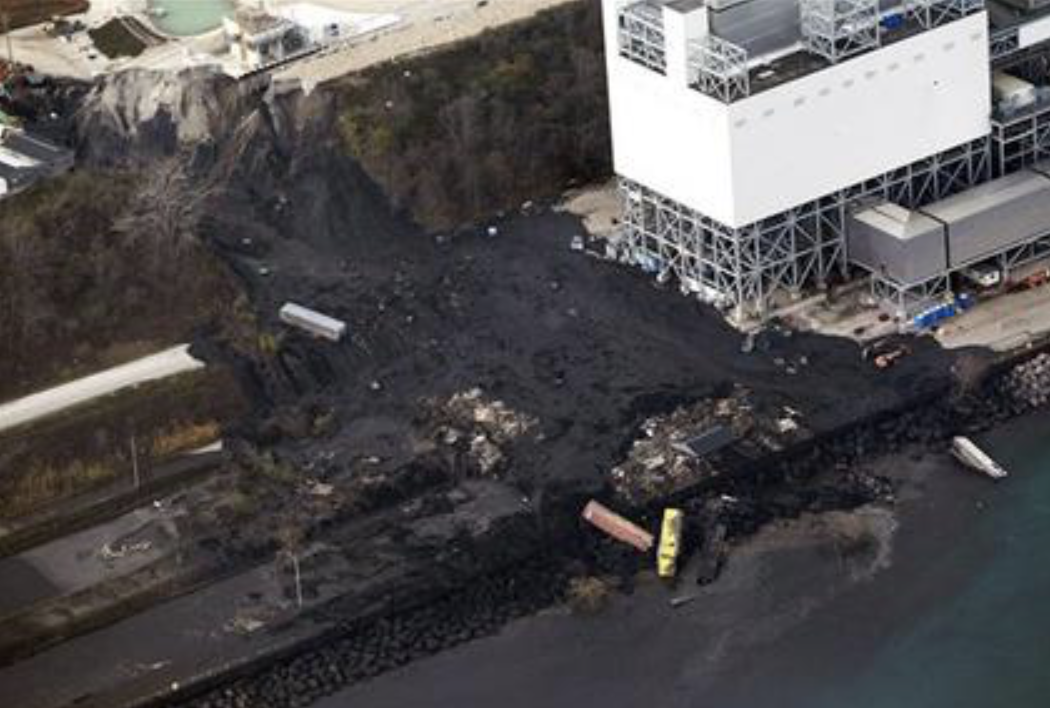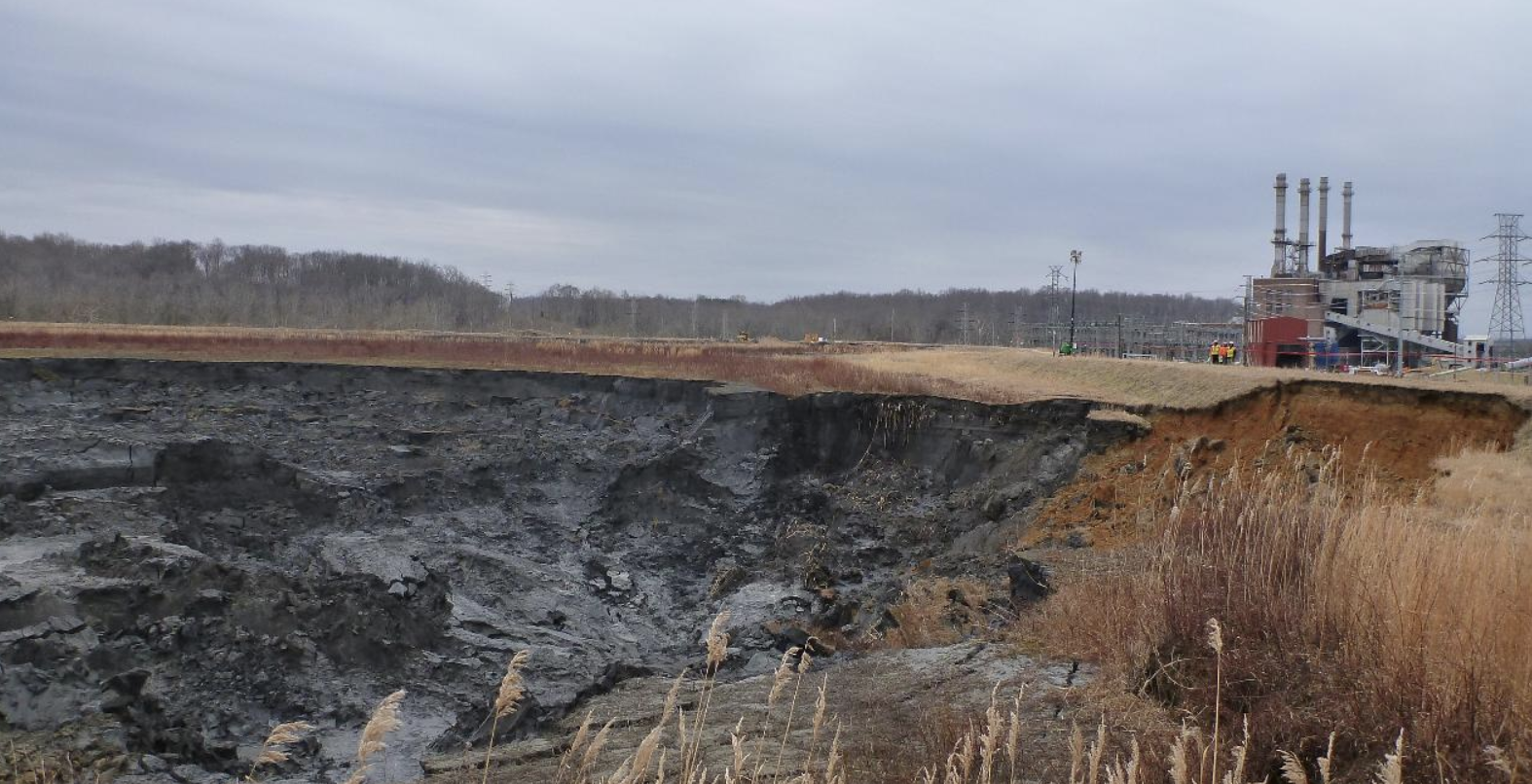What is coal ash?
Coal ash is the toxic waste byproduct of burning coal that collects in the furnaces, boilers, and smokestacks of coal-fired power plants. While there are different types, it usually consists of a powdery material ranging in color from light gray to pitch black. Sometimes, though, it can have a sludge-like consistency or is mixed with water to form a slurry.
About 110 million tons of coal ash are generated every year in the United States — the weight of nearly 3 million eighteen-wheeler semi-trucks. While companies send some of this waste to landfills, much of it is stored indefinitely near the coal plants in huge lagoons that can span hundreds to thousands of acres. Wisconsin burns so much coal, there are 24 coal ash sites in or near Wisconsin in 9 different locations that accumulate much of this hazardous waste — the majority of them suffering from aging infrastructure and lacking sufficient safety mechanisms. But most of the coal ash in Wisconsin is actually “beneficially reused” — a euphemism that means coal companies dispose of it by burying it under newly constructed roads and buildings or mixing it with concrete. Despite a name that implies sustainability and recycling, this process is far from beneficial.

Why is it harmful?
Coal ash is an incredibly hazardous substance. It contains heavy metals including arsenic, lead, mercury, cadmium, and chromium that cause a host of cancers and lead to debilitating and potentially fatal health problems ranging from brain damage and strokes to developmental disorders and birth defects to kidney and heart disease. Coal ash also can contain other carcinogens like silica and PAHs and even radioactive substances like uranium. In fact, it’s been documented that people living near coal ash sites have an increased risk of cancer, and the EPA has identified 70 cases where coal ash impoundments damaged human health or the environment.
How are people exposed to it?
Most lagoons used to store coal ash waste are unlined and built very close to the water table, meaning the toxic substances ubiquitous in the slurry can leach into the underlying soil and contaminate groundwater and nearby waterways. This represents a major problem in Wisconsin, a state where groundwater is the drinking water source for two-thirds of its residents. Unfortunately, 91 percent of coal plants contaminate groundwater in some way, and 52 percent led to unsafe levels of arsenic, which is both neurotoxic and carcinogenic. As of 2007, Wisconsin actually had the most documented contaminations out of any state, with 11 sites contaminated. More recently in 2019, researchers discovered contaminated groundwater near 6 Wisconsin coal plants, where the levels of some toxic chemicals were 55 times the EPA’s standards for safe drinking water. Eating fish from the waterways near coal ash sites also poses a tremendous health hazard, as these fish often contain unsafe amounts of heavy metals and toxic substances from exposure to the coal ash-contaminated water. While landfills that store coal ash are generally safer than lagoons, they still can leach harmful substances into groundwater as well.

Coal ash isn’t just stored in lagoons and landfills — coal companies also try to repurpose this toxic waste by rebranding it as a construction material. Under the banner of “beneficial reuse,” coal companies skirt around environmental regulations, avoid testing requirements, and have a license to sell this waste for a variety of purposes — and they’ve been doing so since the 1950s, making billions of dollars peddling it around the state. Wisconsin actually has the highest levels of coal ash reuse in the nation, reusing an estimated 85 percent of the toxic substance. When mixed into concrete or wallboard, coal ash is encapsulated, meaning it is unlikely to leach out. Much of the time, however, it’s used as loose structural fill that provides a base for construction projects, getting stashed under newly erected roads, parking lots, parks, and buildings — where it’s often unlined, unmonitored, and not even adequately tested to see if it will leach heavy metals like lead and arsenic. As a result, these hazardous substances can migrate into groundwater and contaminate drinking water sources. In an analysis conducted by Clean Wisconsin, researchers found unsafe levels of molybdenum in wells closer to “reused” coal ash waste sites, which, in addition to being detrimental on its own, signals the presence of other more dangerous substances. They even found high levels in the drinking water of a Racine area elementary school.
Most alarming of all, when storing coal ash, coal companies often don’t follow safety precautions, which can lead to catastrophic containment failures and massive spills. For example, the wall of a coal ash lagoon in Tennessee collapsed in 2008 and unleashed over a billion gallons of coal ash slurry onto thousands of acres of surrounding lands and into the Tennessee River — representing a spill 10 times the size of BP’s Deepwater Horizon oil spill of 2010. It destroyed wildlife, triggered massive fish kills, and released at least 20 toxins into the environment, including spiking lead, thallium, and arsenic levels. It also poisoned hundreds of workers who cleaned up the spill — 36 have already died from cancer and other diseases associated with the cleanup and dozens more have gotten sick with coal ash-linked illnesses like heart failure, stroke, rare blood, and brain cancers, skin sores, ruptured colons, and chronic lung diseases. Many of the workers were exposed from breathing in high concentrations of airborne coal ash dust while on the job — indicating another route of exposure.
Coal ash containment failures have also occurred closer to home — right here in Wisconsin:
-
 In 2011, a bluff built in the 1950s in Oak Creek containing a lagoon of coal ash collapsed, spilling approximately 5 million gallons of the toxic waste into the surrounding areas and even into Lake Michigan. Prior to the spill, scientists had been voicing concerns about the structural integrity of the bluff for years, but We Energies failed to address the problem. Afterward, residents observed coal ash and other debris in the Lake Michigan waters near their homes. The complete effects of the spill will probably never be known: it could mean contaminated groundwater and beaches; it could mean drinking water contaminated with selenium, molybdenum, or other poisonous heavy metals; and it could mean our national treasure, Lake Michigan, polluted with mercury and fish that are unhealthy and unsafe to eat.
In 2011, a bluff built in the 1950s in Oak Creek containing a lagoon of coal ash collapsed, spilling approximately 5 million gallons of the toxic waste into the surrounding areas and even into Lake Michigan. Prior to the spill, scientists had been voicing concerns about the structural integrity of the bluff for years, but We Energies failed to address the problem. Afterward, residents observed coal ash and other debris in the Lake Michigan waters near their homes. The complete effects of the spill will probably never be known: it could mean contaminated groundwater and beaches; it could mean drinking water contaminated with selenium, molybdenum, or other poisonous heavy metals; and it could mean our national treasure, Lake Michigan, polluted with mercury and fish that are unhealthy and unsafe to eat.
-
Residents in Caledonia, a rural town near Oak Creek and Racine, have been unable to drink their well water due to possible coal ash contamination. In September of 2010, dozens of wells were found to have excess levels of molybdenum and boron — which can lead to gout, anemia, and reproductive problems — and the DNR advised the residents not to use their water for cooking or drinking. Although the link between the levels of molybdenum and the three coal ash landfills from the Oak Creek power plant nearby is inconclusive, We Energies has been supplying bottled water to the residents with tainted wells and even purchasing and demolishing nearby houses. Although the bottled water is helpful, residents are left with decreased property values, an inability to sell their homes, uncertainty, and concern; some residents were not part of the agreement to buy bottled water and must supply their own. The lack of record-keeping regarding the “beneficial reuse” of coal ash poses major problems for investigating the source of the contamination — for decades, coal ash has been irresponsibly stashed pretty much everywhere in Wisconsin without keeping track of it.
-
The residents of the Town of Wilson, near Sheboygan, have not been able to get answers about their drinking water. After rising cancer rates and illness and citizen testing, the residents began questioning whether their water may be contaminated. When renewing the permit for the landfills, the Town of Wilson asked that Alliant Energy begin testing Boron and Cadmium 6. As a result of their concerns, Alliant Energy sued the town challenging their testing requirements, and the judge sided with Alliant Energy. DNR has not taken any action.
